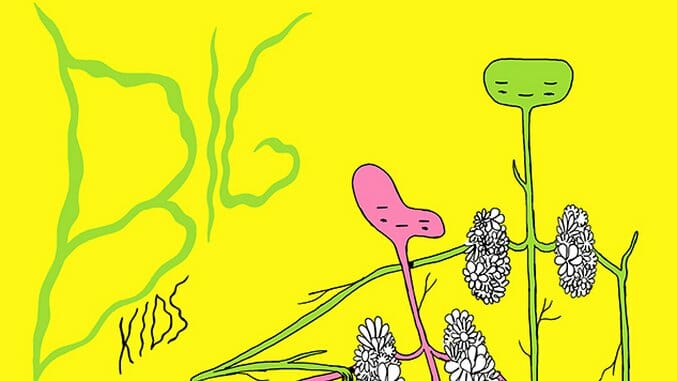Memory, Transformation and Trees: Michael DeForge on Big Kids

Readers can be forgiven for anticipating a familiar coming-of-age story after looking at the first few pages of Michael DeForge’s new sucker punch graphic novel, Big Kids. The story follows teenage narrator Adam as he contends with the intrusions of his police officer uncle, his secret relationship with his classmate, Jared, and his growing awareness of a world outside of everyday family and high school drama. Framed as the recollections of an older Adam—with occasional narrative pauses to apologize for ambiguity in certain memories—the tale hits any number of beats associated with Bildungsromans where a youth begins to discover him or herself.
Then Adam’s parents take on a boarder, a young college student named April, and things take a turn for the surreal. Adam begins to see the world differently—a place where humanity is divided into trees and twigs with unusual methods of perceiving stimuli. This dreamlike twist provides a showcase for DeForge’s artwork, which shifts from cartoonish to psychedelic and intricate (and back again) repeatedly over the course of the book. The end result makes for a haunting take on growing up and discovering that life is a much stranger journey than one could ever imagine. Paste talked with DeForge (First Year Healthy, Any Colony) about the book’s origins, his approach to its unusual character designs and the role that online fundraising has had in his work. Big Kids debuts next week from publisher Drawn & Quarterly.![]()
Paste: Big Kids begins as a very realistic coming-of-age story, and then takes a significant turn for the surreal. Had you initially planned for the book to be a more realistic work, or was the tree/twig divide there from the beginning?
Michael DeForge: The transformation was there from the start. The trees were originally supposed to be more of a secret society—this cult-like institution the protagonist gradually becomes aware of and a part of, but I clearly dropped that angle as I got more into it.
Paste: Was there an initial image or scene that you began with when you started work on the book?
DeForge: Not really. I already draw a lot of wormy, veiny things, so I suppose plants and roots show up in my work a lot.
Paste: The characters’ tree bodies are very distinctive, with aspects that seem both uncanny and anatomical. How did you go about creating those as a design?
DeForge: My design choices are pretty intuitive. They’re all choices that look right in the moment. So the trees were just a happy accident, arrived at from hashing stuff out in a sketchbook.
-

-

-

-

-

-

-

-

-

-

-

-

-

-

-

-

-

-

-

-

-

-

-

-

-

-

-

-

-

-

-

-

-

-

-

-

-

-

-

-











































